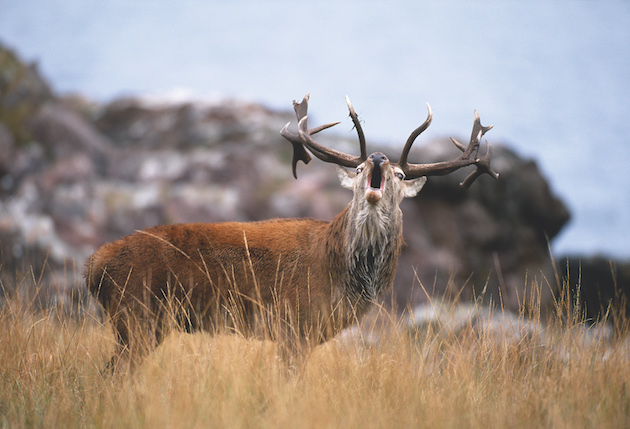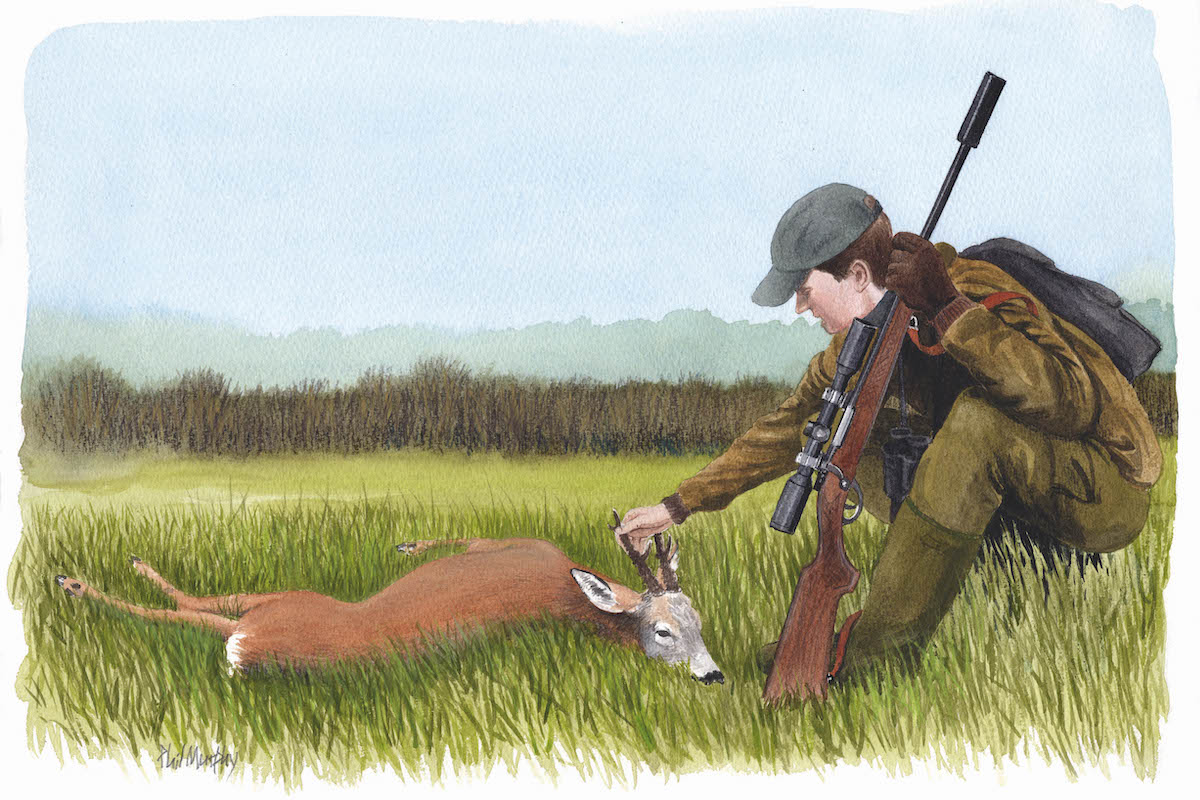The mighty stags of the English lowlands
Size isn’t everything but if you’re after a big red stag this season the Highlands aren’t the place to go looking says Patrick Laurie

The rutting season is a multi-sensory delight that is embedded in Highland culture
Lockdown has been a time for daydreaming. Trapped indoors for days on end and confined to barracks during a beautiful spring, thoughts have now begun to return towards sporting ambitions.
A friend in Yorkshire has nurtured a lifelong ambition to cast a fly into the Hampshire chalkstreams. He has been postponing the trip for a decade, but the compression of lockdown has been released in a sudden surge of decisive action. He has vowed that 2020 will be the year it comes together. Likewise, a colleague in Wales is emerging from the crisis with a burning ambition to bag his first grouse.
Having been denied all access to fieldsports, we’re emerging from coronavirus with an ambitious ‘seize the day’ attitude.
It’s still unclear what impact the virus will have on the various sporting seasons ahead. Preparations for driven game seem to be patchy, but many estates and shoots are pushing ahead in the hope that all will be well.
When it comes to deer stalking, most Scottish estates are looking at the season ahead with some uncertainty. The stag season will open on 1 July, but it remains to be seen how this will work out in practical terms if guests are unable to travel north or find accommodation when they get there.
Perhaps there will be a slow start which builds to a crescendo later as lockdown conditions continue to ease. But if daydreaming is a theme of 2020, it’s worth an imaginary romp across the hills to seek out the biggest and best stags of the year.

The imperious red deer are very much a symbol of Scotland
Finding the red stag
Red deer are synonymous with Scotland. Anybody who has bought a tin of shortbread will make an immediate connection to antlers in the land of tartan and whisky, but Scotland is generally a poor and marginal place for red deer. Look in more heavily forested parts of Europe and you’ll find stags that make our finest heads look twiggy and slim.
We think of stags and imagine the vast, mountain vistas of Wester Ross or Highland Perthshire, but this is a relatively thin habitat for deer, which do best in forests and the rich, comfortable terrain of the lowlands.
Heavy-headed beasts
Visiting eastern Poland in December, I happened to find a dozen red stag in a deep oak forest where wolves howled in the twilight. They were vast, heavy-headed beasts, more like bullocks than the deer I’m used to seeing here in Britain. Place one of these forest stags alongside a highlander from Harris or Islay and you could easily imagine they were a different species.
The same effect is true in Britain, where deer generally decrease in scale as you head north. Some of the stags on Exmoor are mighty, strapping animals, and red deer in East Anglia are famously vast. But this changes as you head up country, partly on account of climate and latitude but also because of available vegetation and forage.
Red deer in the far south-west of Scotland became famous for their enormity in the 1960s and 1970s.
Galloway had always held a patchy population of deer and these animals were a mix of truly wild bloodlines and escapees from deer parks. It is thought that many of these escapees had been ‘improved’ by crossing them with Canadian wapiti bloodlines, but it can be very hard to trace this back with any certainty. It seems like lots of wapiti were brought to Scotland during the Victorian period, but there are very few records of where they went and whether their bloodlines were successfully integrated with native stock.
Some estates attribute the size of their deer to wapiti influences, but others seem to believe that these imports made very little difference. Some scientists reckon that the impact of a few exotic stags quickly became so diluted that it is hard to measure today, but it seems that wapiti bloodlines produce stags with distinctive webbing between their antler points.
This has been evident in deer from Stranraer to Banchory. Broad, flattened crowns and points which seem to blur into one another make for a big and heavy head. At the same time, it’s unlikely that bloodlines alone can turn a good animal into something superb. The real prerequisite of enormity is habitat. After World War II, the British government bought more than 300 square miles of Galloway into public ownership. The land lay between Newton Stewart and Ayr, and it was designated for planting with commercial conifers. The deer loved the new trees and their numbers began to rise as the new plantations grew.

The Monarch of the Glen, Edwin Landseer, 1851
These were early days for the Forestry Commission and many of the new plantings were set aside as experimental plots. Some were treated with fertiliser to help the trees grow and it stood to reason that the deer around these areas grew to an enormous size on rich, lush vegetation. Under these same conditions, hind fertility improved, calves started well and grew to be healthy and strong. It’s no surprise that the number of deer skyrocketed.
Trace back through the records and you’ll find many of the biggest stags shot in Britain during the 1960s came from Galloway and this seems to have been a terrific boom period for the beasts.
Similar stories were found in other parts of Scotland as the hills were planted and deer benefited from a profusion of dense cover and easy living.
The stags found it easy to shelter in the trees during hard winters and many of the new plantations had been designed in such a way that stalking them was extremely difficult. Shielded from stalkers and buoyed by enriched soils, huge stags began to appear. This is not only borne out in antler sizes, but also bodyweights.
There was a time when a 20-stone stag was almost unheard of in Scotland, but it’s not uncommon to find such beasts today, particularly in Galloway, Argyll and the Inner Hebrides where the living is easy. Even in recent years, the biggest Scottish stags often hail from the south and south-west.
Lure to deerstalkers
Advocates of rewilding sometimes argue that if deer numbers could be reduced and the hills allowed to regenerate with ancient pinewoods, the quality of stags would surely increase once again. This is held out as a tempting lure to deerstalkers who are sceptical of any move to overhaul land management in the hills.
In some ways, it’s encouraging that after 10 years of attacking the fieldsports community, rewilders are starting to realise that a carrot works better than a stick. It does seem quite possible that reducing deer numbers and shifting to a more forested model of stalking might increase the size and quality of stags, but that is a simple argument in a complex situation.
Visiting stalkers might be content to shoot fewer stags if they were assured that the quality of their trophies had improved, but that downplays the significance of Scottish stalking as an immersive and unique cultural experience which takes place on the open hill. Like many arguments around sustainability, ‘less but better’ sounds great, but it does need to be unpicked and carefully examined.
It’s always tempting to lean back and imagine the ultimate stag — some black-maned tyrant with antlers like chandeliers and a roar like a lion. As lockdown lifts and the countryside opens for business again, it’s a good moment to mark up a bucket list and start looking around for the opportunity to get out on the hill.
The quality of the day is hardly determined by the size of the quarry, but there is a quiet thrill in pondering big stags wherever they roam.








